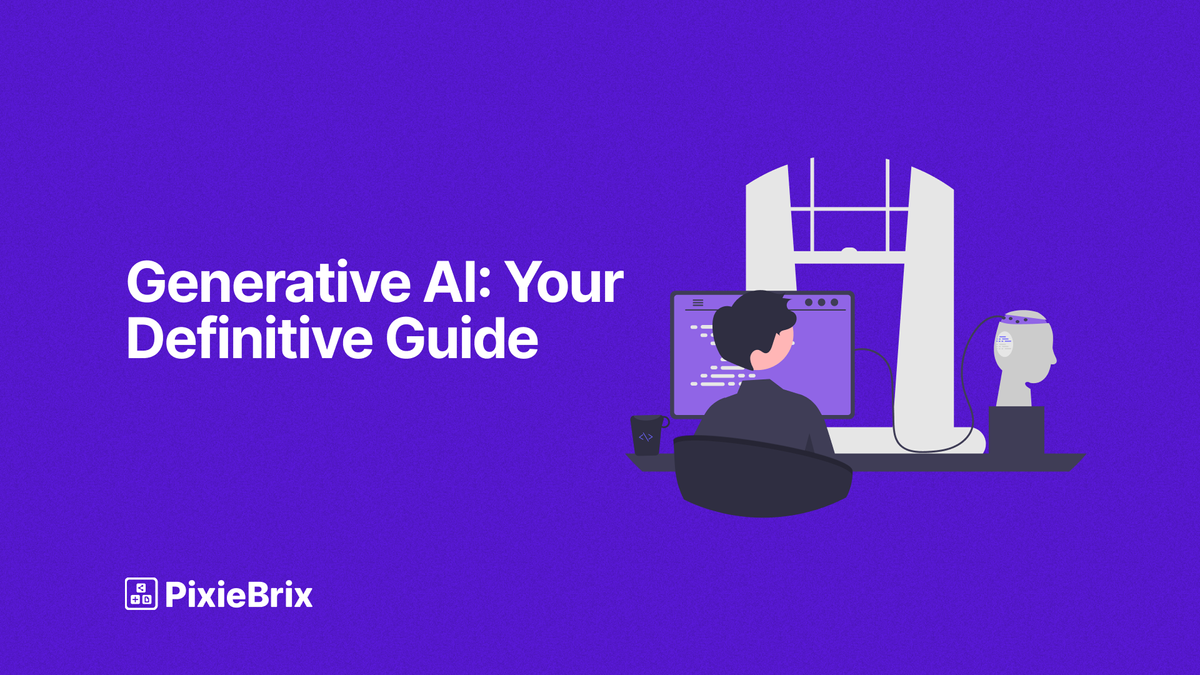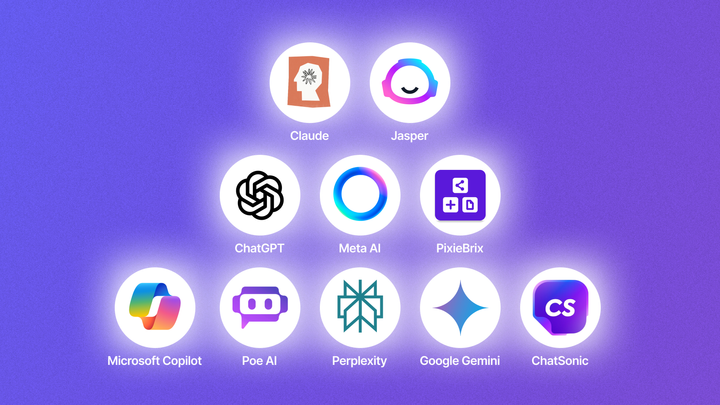What is Generative AI? Your Guide To Everything GenAI

Generative AI is reshaping industries. Understanding its capabilities and limitations is crucial for businesses seeking a competitive edge. This guide provides a comprehensive overview of generative AI, exploring practical applications and offering actionable implementation strategies. Discover how to harness this technology effectively and drive tangible results for your organization.
Generative AI is a subset of artificial intelligence that focuses on creating new content rather than analyzing existing data. Leveraging complex algorithms and vast datasets, these models can generate text, images, music, and even code. While still in its early stages, generative AI has shown immense potential across various industries, from marketing and content creation to drug discovery and design.
Understanding generative AI is crucial for businesses and individuals seeking to stay ahead in the digital age. This guide provides a comprehensive overview of generative AI, including its core concepts, practical applications, and implementation strategies. By exploring the capabilities and limitations of this technology, you can make informed decisions about its potential impact on your organization.
The potential applications of generative AI are vast and span across industries. In marketing, it can generate ad copy, social media posts, and product descriptions. In design, it can assist in creating logos, website layouts, and product designs. Beyond these areas, generative AI has the potential to revolutionize fields such as healthcare, education, and entertainment. However, it's essential to approach generative AI with a critical eye, considering ethical implications and potential biases in the data used to train these models.
Practical Applications
Generative AI has made significant strides in practical applications across various industries. In the realm of content creation, it can automate the generation of articles, blogs, and marketing copy, streamlining workflows and reducing the time required for content production. By leveraging advanced language models, businesses can produce high-quality text that is both relevant and engaging, tailored to specific audiences without the constant need for human intervention.
In the customer service sector, generative AI enhances support by powering chatbots and virtual assistants that provide instant, accurate responses to customer inquiries. These systems can handle routine queries and escalate more complex issues to human agents, improving efficiency and customer satisfaction. Additionally, generative AI assists in personalizing user experiences by analyzing customer data and generating customized recommendations or solutions, contributing to a more targeted and responsive service approach.
The use of generative AI extends to data analysis and report generation, where it can summarize large volumes of information, identify key trends, and produce detailed reports with minimal manual effort. This application helps organizations make informed decisions quickly and accurately, leveraging AI's ability to process and interpret data at scale. By automating these tasks, businesses can allocate resources more effectively and focus on strategic initiatives.
Real-world Applications
Companies like Jasper are leveraging GenAI to streamline content creation. Jasper’s AI-driven platform assists marketers by generating blog posts, social media content, and ad copy, significantly reducing the time and effort required for content production. This not only boosts productivity but also enhances consistency in brand messaging.

In the financial sector, Mastercard utilizes GenAI for fraud detection and risk management. By analyzing transaction data, Mastercard’s AI systems can generate predictive models to identify unusual patterns that may indicate fraudulent activity. This proactive approach helps in mitigating risks and safeguarding financial transactions, thereby improving security and operational efficiency.

NVIDIA demonstrates GenAI’s capabilities in the gaming industry by employing it to create realistic virtual environments. NVIDIA’s AI technology generates intricate game landscapes and characters, providing developers with tools to enhance gameplay experiences. This application of GenAI enables more immersive and engaging gaming experiences, pushing the boundaries of virtual world creation.
Everlaw is even using trying to reshape the future of law with GenAI. Everlaw’s AI Assistant brings the power of generative artificial intelligence (GenAI) to core litigation and investigation workflows. It takes the first pass of arduous tasks — such as reading, reviewing, and summarizing vast amounts of documents — off your plate, so you can save time and augment your work. It also cites its source text or documents where possible, allowing you to check the work efficiently.
Implementing GenAI Strategy
Understanding Your Goals and Resources
Before diving into specific tactics, clearly define your objectives for using generative AI. Are you aiming to improve content creation efficiency, enhance customer experience, or optimize internal processes? Once goals are established, assess available resources, including technology, data, and personnel.
Identifying Suitable Use Cases
Prioritize potential applications based on business impact and feasibility. Consider areas like content generation (blog posts, product descriptions), customer service (chatbots), data analysis, or process automation. Conduct a thorough analysis of existing workflows to identify opportunities for AI integration.
Building a Strong Foundation
Ensure your data infrastructure is robust and secure. High-quality data is essential for training effective AI models. Develop data governance policies to protect sensitive information and maintain compliance. Additionally, invest in AI talent or partner with external experts to support implementation and ongoing optimization.
Iterative Development and Testing
Implement a phased approach to minimize risks and maximize returns. Start with small-scale projects to refine processes and gather insights. Continuously monitor performance metrics and make necessary adjustments. Encourage a culture of experimentation and learning to drive innovation.
Ethical Considerations
Develop guidelines for responsible AI use, including bias mitigation, transparency, and accountability. Consider the potential impact of AI on employees and customers. Implement measures to protect user privacy and data security.
Measuring and Optimizing
Establish key performance indicators (KPIs) to track the success of your generative AI initiatives. Regularly analyze results to identify areas for improvement. Optimize models and algorithms over time based on performance data.
By following these steps and maintaining a focus on strategic planning, you can effectively harness the power of generative AI to achieve your business objectives.
In conclusion, understanding generative AI is essential for anyone looking to leverage modern technology in their projects. This guide has explored what is generative AI, its definitional aspects, and its various applications such as Photoshop AI generative fill and AWS generative AI. We discussed how generative AI images are created and even highlighted popular generative AI tools.
By delving into real-world generative AI examples, you can appreciate its transformative potential, from enhancing creativity in Adobe generative AI projects to boosting efficiency in generative AI for retail. If you are interested in advancing your knowledge, consider enrolling in a generative AI course or pursuing a generative AI certification.
Ultimately, understanding generative AI vs predictive AI will further enhance your ability to apply these technologies effectively. As you ask yourself "what is generative AI?" or "how does generative AI work?" remember that mastery of these concepts can lead to substantial improvements in your workflow. For those venturing into photoshop generative AI, note how AI generative fill revolutionizes image editing.
By equipping yourself with knowledge about generative AI meaning and its various uses, you position yourself at the forefront of innovation in your field.



